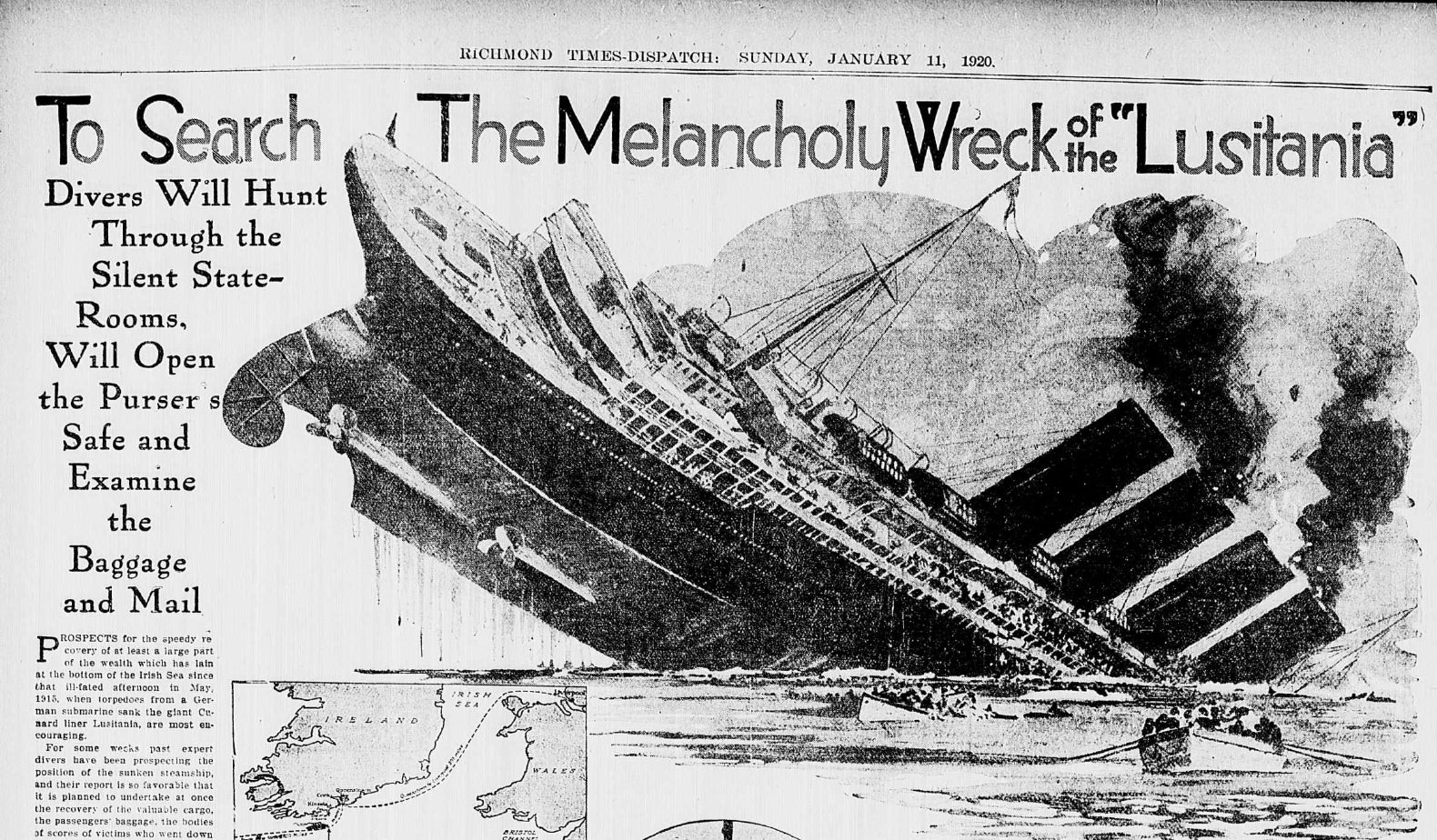Today marks the centennial of the sinking of the Lusitania, usually acknowledged as the first step towards the United States’ entry into World War I. The Lusitania was torpedoed by a German U-boat off the coast of Ireland on 7 May 1915, causing the deaths of 1,198 passengers and crew. The death toll included 128 Americans, sparking outrage throughout the nation.
One of the survivors was Richmond native Charles Hill, who was 38 at the time of the sinking. Hill, who worked for the British-American Tobacco Company, had been living in England with his family for almost 15 years. He returned periodically to Richmond to visit his father, C. Emmett Hill. In April, Hill, his wife Eva, and their children returned to the U.S. for the sake of her health, travelling on the Lusitania. On 1 May, Hill re-boarded the Lusitania in New York, bound for Liverpool with almost 2,000 other passengers and crew members.
Hill was on the starboard promenade deck of the Lusitania when it was struck, and saw both the periscope of German submarine U-20 and the wake of the torpedo. After rushing below decks in an unsuccessful attempt to find several friends, Hill returned deck and made it into lifeboat number 14, which over the course of the afternoon capsized six times. Hill clung to the lifeboat with several other passengers and was eventually picked up by the Indian Empire. Upon arrival in Queenstown, Hill immediately sent a telegram to his company and informed his family of his survival. Hill’s status as a Lusitania passenger and the notice of his survival were both featured in the coverage of the disaster in the Richmond Times-Dispatch. The May 8 edition, under a large headline noting that less than 600 passengers and crew were accounted for, observed the similarity of news-seeking crowds in the city to those of the “horror-filled days” following the sinking of the Titanic barely three years earlier.
Some notables among the 1,198 victims included Alfred G. Vanderbilt, prominent theatre producer Charles Frohman, writer Elbert Hubbard and his wife, playwright Charles Klein, and Irish art collector Sir Hugh Lane. The ship also contained $2 million in various metals, $2 million in jewelry and other valuables, $5 million in negotiable and unregistered securities, and $5 million in other cargo.
While the sinking of the Lusitania is usually remembered as a cause of America’s entry into World War I, almost two years would pass between the sinking of the ship and Woodrow Wilson’s declaration of war on 6 April 1917. In those years, Germany’s resumption of unrestricted submarine warfare and the notorious Zimmermann Telegram caused relations between Germany and the United States to deteriorate, until the United States finally made their entry into the “war to end all wars.”
In the years following World War I, the Lusitania was featured in Richmond newspapers again as they reported attempts to raise or to explore the wreckage of the great ship. Long after its momentous sinking, the Lusitania continued to captivate the public imagination.
-Claire Radcliffe, State Records Archivist



























